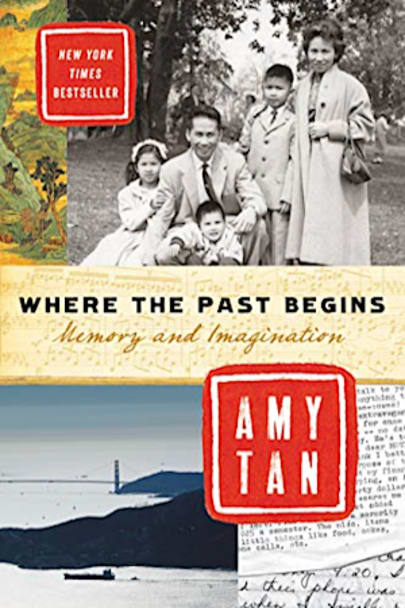From New York Times bestselling author Amy Tan, a memoir about finding meaning in life through acts of creativity and imagination
In Where the Past Begins, bestselling author of The Joy Luck Club and The Valley of Amazement Amy Tan reveals the ways that our memories and personal experiences can inform our creative work. Drawing on her vivid impressions of her upbringing, Tan investigates the … her vivid impressions of her upbringing, Tan investigates the truths and inspirations behind her writing while illuminating how we all explore, confront, and process complex memories, especially half-forgotten ones from childhood.
With candor, empathy, and humor, Tan sheds light on her own writing process, sharing her hard-won insights on the nature of creativity and inspiration while exploring the universal urge to examine truth through the workings of imagination—and what that imaginative world tells us about our own lives. Where the Past Begins is both a unique look into the mind of an extraordinary storyteller and an indispensable guide for writers, artists, and other creative thinkers.
more



Amy Tan never disappoints. This one is a biography of parts of her life growing as a Chinese American with a domineering mother, an endearing father, her love of music, Amy’s road to becoming who she is today; a wonderful writer with a true sense of her heritage. A joy always to read one of her books and this one does not disappoint.
Tan’s life story is interesting however it is too specific to her to be helpful to other writers.
Lovely and very often inspirational thoughts and anecdotes from one of my favorite authors.
This was not quite the book I expected when I started reading, but it was fascinating, nevertheless.
The opening is more about Tan’s writing. I had to laugh out loud when her introduction included some very humorous asides from her editor, Daniel Halpern.
In talking about her work on the book, she says – “Even so, I did not miss a deadline, except one. The last.”
But Halpern adds – [ed. Note: Technically, she was always a day late, using the excuse of PST, to protest her PTSD.]
I had thought this was a memoir about Tan’s writing, but it’s more about where she came from, both the circumstances of her growing up years, the way her parents interacted with her, and going back farther, to the stories of her ancestors that sparked her imagination.
There are excerpts from journals and even from novels that never made it to culmination.
“I have embarked on an impossible task. I will have fewer than a hundred pages, always fewer than a hundred, and they are all bad . . . This is not writer’s block. This is chaos with no way out.”
But the book is weighted heavily in the story of her family, something that fascinates many of us. Where her mother came from, where her father came from to a lesser degree – who they were as people- how she felt about events that happened in her childhood then how her understanding of them progressed as she looked deeper into the letters and journals and other artifacts her family left behind.
“She always looked for signs that her mother was going to explode, so she could get ready for it, but this time she forgot.”
There is a great deal about the experiences of her grandmother, her mother’s mother, in China and how that affected her mother and thus Tan. Tan shares the view of this history from multiple points in her life, and thus multiple perspectives, especially when new information makes things more clear. These stories factor heavily in Tan’s novels.
The sad or difficult things she experienced in life, the fearful ones too, are included here. I won’t go into detail but Tan has lived through some very sad and scary experiences in her life, like the time she was in a car crash in Europe that could have turned out far worse than it did.
At first, I did not love the section of letters back and forth with her editor. Because there are dates in between, I felt like I was missing information, but even more, I felt like the third wheel – listening to two other people have an inside conversation without being able to participate. However, I began to appreciate the insight to her writing method and mental state before, during, and after creating a novel.
This was a very deep and thoughtful book that offered the opportunity for reflection. It was not something I could rush through reading, and even now, I am sure if I went back and read it again, I would learn many new things. It makes me think about keeping a journal of my own and exploring my own family history more. I would definitely recommend.
I am thoroughly enjoying getting to know Amy Tan better. She describes her life experiences so well that I feel I’m there with her.